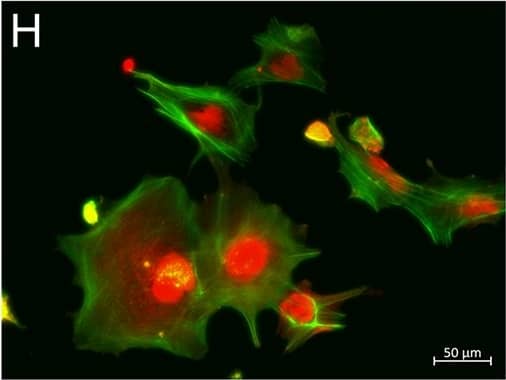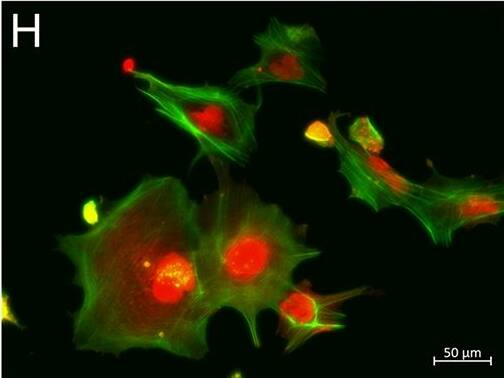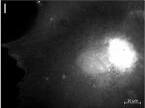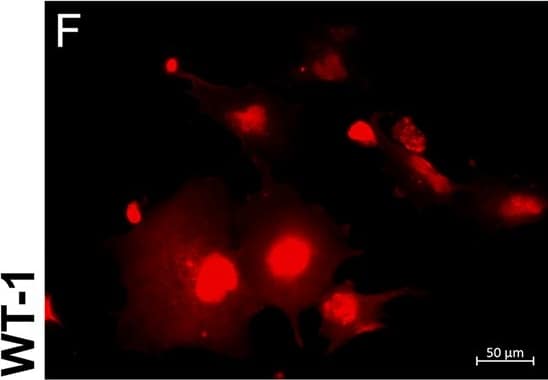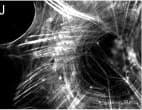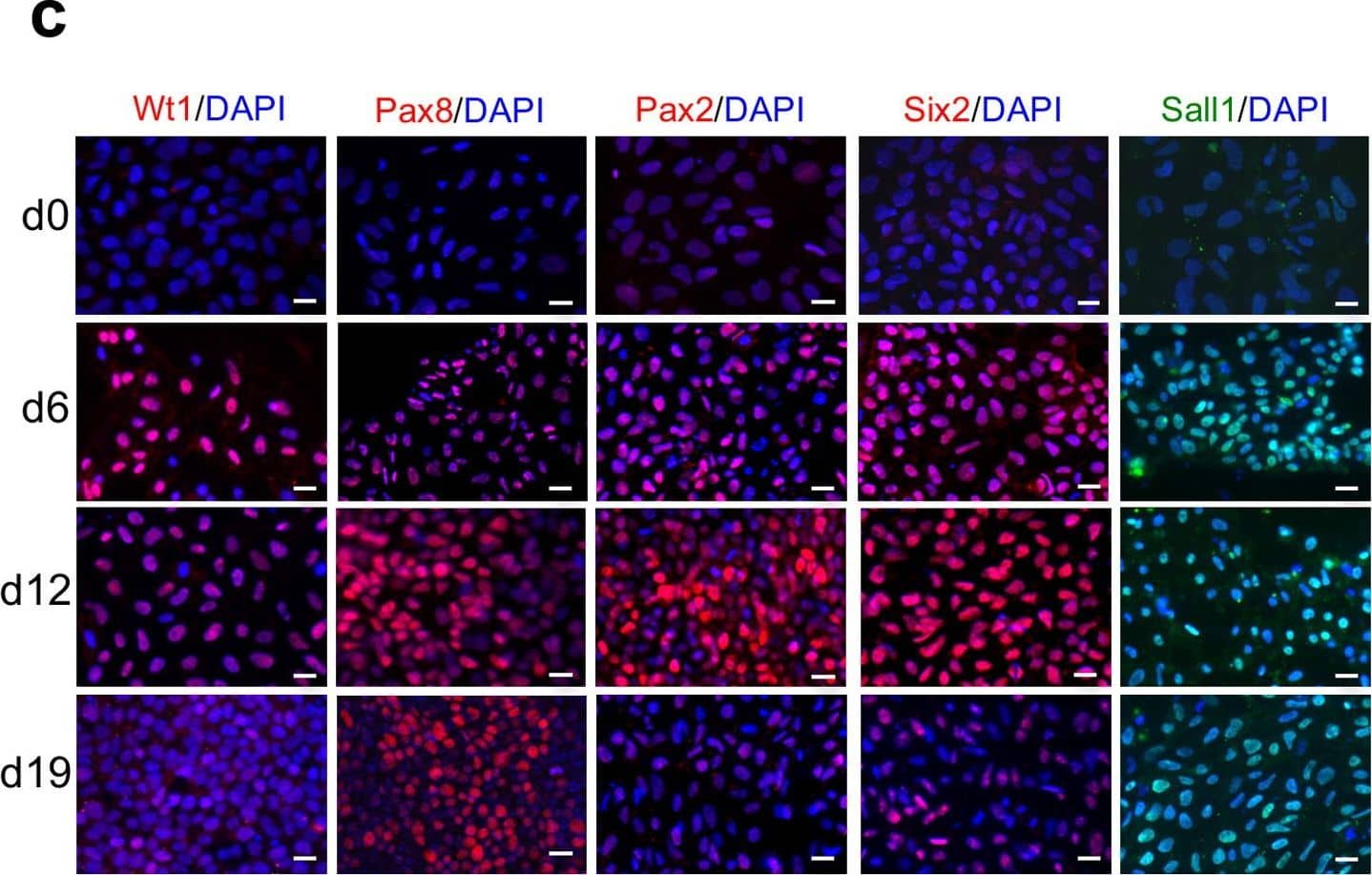Human WT1 Antibody
R&D Systems, part of Bio-Techne | Catalog # AF5729

Key Product Details
Species Reactivity
Validated:
Human
Cited:
Human, Mouse
Applications
Validated:
CyTOF-ready, Intracellular Staining by Flow Cytometry, Western Blot
Cited:
Flow Cytometry, Immunohistochemistry, Western Blot
Label
Unconjugated
Antibody Source
Polyclonal Goat IgG
Product Specifications
Immunogen
E. coli-derived recombinant human WT1
Met127-Gly249
Accession # P19544
Met127-Gly249
Accession # P19544
Specificity
Detects human WT1 in direct ELISAs and Western blots.
Clonality
Polyclonal
Host
Goat
Isotype
IgG
Scientific Data Images for Human WT1 Antibody
Detection of Human WT1 by Western Blot.
Western blot shows lysates of K562 human chronic myelogenous leukemia cell line. PVDF membrane was probed with 1 µg/mL of Goat Anti-Human WT1 Antigen Affinity-purified Polyclonal Antibody (Catalog # AF5729) followed by HRP-conjugated Anti-Goat IgG Secondary Antibody (Catalog # HAF019). A specific band was detected for WT1 at approximately 54 kDa (as indicated). This experiment was conducted under reducing conditions and using Immunoblot Buffer Group 8.Detection of WT1 in HL-60 Human Cell Line by Flow Cytometry.
HL-60 human acute promyelocytic leukemia cell line was stained with Goat Anti-Human WT1 Antigen Affinity-purified Polyclonal Antibody (Catalog # AF5729, filled histogram) or control antibody (Catalog # AB-108-C, open histogram), followed by Allophycocyanin-conjugated Anti-Goat IgG Secondary Antibody (Catalog # F0108). To facilitate intracellular staining, cells were fixed with paraformaldehyde and permeabilized with saponin.Detection of Human WT1 by Immunocytochemistry/Immunofluorescence
Immunostaining of podocyte-like cells derived from the iPSC line SBAD3 with podocyte markers and F-actin staining.iPSC were differentiated on glass cover slips fixed and stained for synaptopodin, WT-1, podocin, and F-actin as described in methods. Red and green colours were applied post capture. Staining in two other iPSC lines are provided in S1 and S2 Figs. Image collected and cropped by CiteAb from the following publication (https://pubmed.ncbi.nlm.nih.gov/30222766), licensed under a CC-BY license. Not internally tested by R&D Systems.Applications for Human WT1 Antibody
Application
Recommended Usage
CyTOF-ready
Ready to be labeled using established conjugation methods. No BSA or other carrier proteins that could interfere with conjugation.
Intracellular Staining by Flow Cytometry
2.5 µg/106 cells
Sample: HL-60 human acute promyelocytic leukemia cell line fixed with paraformaldehyde and permeabilized with saponin
Sample: HL-60 human acute promyelocytic leukemia cell line fixed with paraformaldehyde and permeabilized with saponin
Western Blot
1 µg/mL
Sample: K562 human chronic myelogenous leukemia cell line
Sample: K562 human chronic myelogenous leukemia cell line
Formulation, Preparation, and Storage
Purification
Antigen Affinity-purified
Reconstitution
Reconstitute at 0.2 mg/mL in sterile PBS. For liquid material, refer to CoA for concentration.
Formulation
Lyophilized from a 0.2 μm filtered solution in PBS with Trehalose. *Small pack size (SP) is supplied either lyophilized or as a 0.2 µm filtered solution in PBS.
Shipping
Lyophilized product is shipped at ambient temperature. Liquid small pack size (-SP) is shipped with polar packs. Upon receipt, store immediately at the temperature recommended below.
Stability & Storage
Use a manual defrost freezer and avoid repeated freeze-thaw cycles.
- 12 months from date of receipt, -20 to -70 °C as supplied.
- 1 month, 2 to 8 °C under sterile conditions after reconstitution.
- 6 months, -20 to -70 °C under sterile conditions after reconstitution.
Background: WT1
(aa 323‑347; 353‑377; 383‑405; 414‑438). WT1 forms homodimers, and interacts with multiple molecules. Interaction with the zinc fingers generally promotes gene transcription, while N‑terminal interactions block gene transcription. There are at least two dozen splice variants. Some are combinations of deletions of aa 250‑266 and 408‑410, plus an alternate start site 68 aa upstream of the standard site, and a three aa substitution for aa 1‑147. Over aa 127‑249, human WT1 shares 98% aa identity with mouse WT1.
Long Name
Wilms Tumor 1
Alternate Names
GUD, WAGR, WIT-2, WT33
Gene Symbol
WT1
UniProt
Additional WT1 Products
Product Documents for Human WT1 Antibody
Product Specific Notices for Human WT1 Antibody
For research use only
